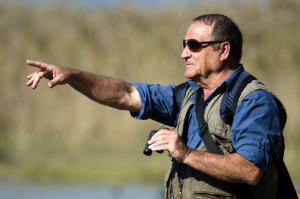 When you think of a pigeon, you probably think of park benches and cities, but pigeons can be found in rural areas, as well. In fact, the white-crowned pigeon nests nowhere else in the United States except for south Florida.
When you think of a pigeon, you probably think of park benches and cities, but pigeons can be found in rural areas, as well. In fact, the white-crowned pigeon nests nowhere else in the United States except for south Florida.
They can be found in the mangrove forests in the Everglades and south Florida. They will nest in the mangroves but spend a lot of time in the wooded areas, as well. They will lay one to three white eggs at time. Both the male and female will incubate the eggs. After hatching, the baby pigeons will leave the nest after 3 weeks. The parents both feed their young “pigeon milk.” Nesting usually occurs in July and August.
This pigeon’s body is a black/gray color with a white-capped head. They have iridescent green feathers on the back of their neck. They are around 13-14 inches in size. The oldest recorded white-crown pigeon was 14 years, 5 months old.
The pigeons are known to move more inland during the day to feed on fruit from the Poisonwood tree. They also eat strangler fig, pigeon plum, mastic, sea grape, seeds, insects, and other tropical fruits.
This pigeon can be easily spotted perching in trees. Unlike many “city” pigeons, they don’t spend much time on the ground. In the Everglades, they can be seen around Nine-Mile Pond, Snake Bight Trailhead, Eco Pond, and Bear Lake Road. Their population. There’s about 7,500 pairs of this pigeon living in Florida.
Along with Florida, this bird can also be found in the Caribbean and parts of Central America.
There is believed to be a global population of 550,000 of this bird. In 2014, they were on risk of becoming threatened or endangered. They are protected in Florida but are still hunted for food in the Caribbean. When mangrove forests are lost due to hurricanes, their habitat is compromised, which is a concern.
If you’re a bird watcher of just a fan of birds, the Everglades is the ideal place to see so many different species, including the white-crowned pigeon. Come explore the Everglades by airboat on a ride with Captain Mitch. Captain Mitch’s Airboat Tours give you a fun and exciting glimpse of the Everglades. To book an airboat ride, click here or call 800-368-0065.
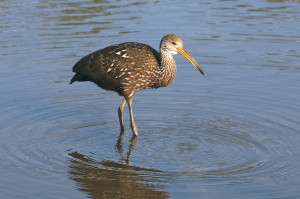 At certain times of the year, the Everglades can look like a scene out of Alfred Hitchock’s The Birds. Thousands of birds flock down to this warm climate to spend the winter and breed. For this article, we wanted to spotlight one species of bird that can be found in the Everglades: the Limpkin. This bird can actually be found in the Everglades year-round.
At certain times of the year, the Everglades can look like a scene out of Alfred Hitchock’s The Birds. Thousands of birds flock down to this warm climate to spend the winter and breed. For this article, we wanted to spotlight one species of bird that can be found in the Everglades: the Limpkin. This bird can actually be found in the Everglades year-round.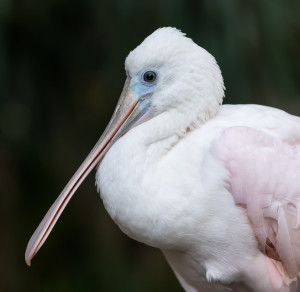 During the winter season, Florida can look like a scene out of Jurassic Park. The sheer scale and variety of birds flocking down here is a sight to be seen. Hundreds of birds of varying species stand side by side bodies of water and make the area their home for the winter/nesting season. One bird that can be spotted in southern Florida is the roseate spoonbill, and it happens to be a threatened species.
During the winter season, Florida can look like a scene out of Jurassic Park. The sheer scale and variety of birds flocking down here is a sight to be seen. Hundreds of birds of varying species stand side by side bodies of water and make the area their home for the winter/nesting season. One bird that can be spotted in southern Florida is the roseate spoonbill, and it happens to be a threatened species.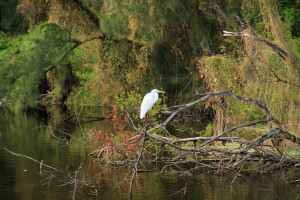 It’s officially the dry season in the Everglades and Florida, which is the best time to head down to the area to view an array of different wildlife species. During this time of year, the good weather combined with low water levels creates the perfect conditions and environment for animals and birds to congregate near bodies of water.
It’s officially the dry season in the Everglades and Florida, which is the best time to head down to the area to view an array of different wildlife species. During this time of year, the good weather combined with low water levels creates the perfect conditions and environment for animals and birds to congregate near bodies of water.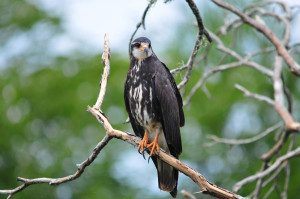 Avid birdwatcher? Well, the Everglades is a great place to go bird watching; you’ll see a variety of birds. The Park provides the perfect setting with plenty of spots where birds roost, nest, eat, or fly by. In fact, the Park is one of the top 10 birding locations in the world; park goers have the chance to see both resident coastal and wading birds in a number of different species. There are more than 350 species of birds in the Everglades for a person to catch a glimpse of! Come prepared with a set of binoculars to spot as many as you can!
Avid birdwatcher? Well, the Everglades is a great place to go bird watching; you’ll see a variety of birds. The Park provides the perfect setting with plenty of spots where birds roost, nest, eat, or fly by. In fact, the Park is one of the top 10 birding locations in the world; park goers have the chance to see both resident coastal and wading birds in a number of different species. There are more than 350 species of birds in the Everglades for a person to catch a glimpse of! Come prepared with a set of binoculars to spot as many as you can!





